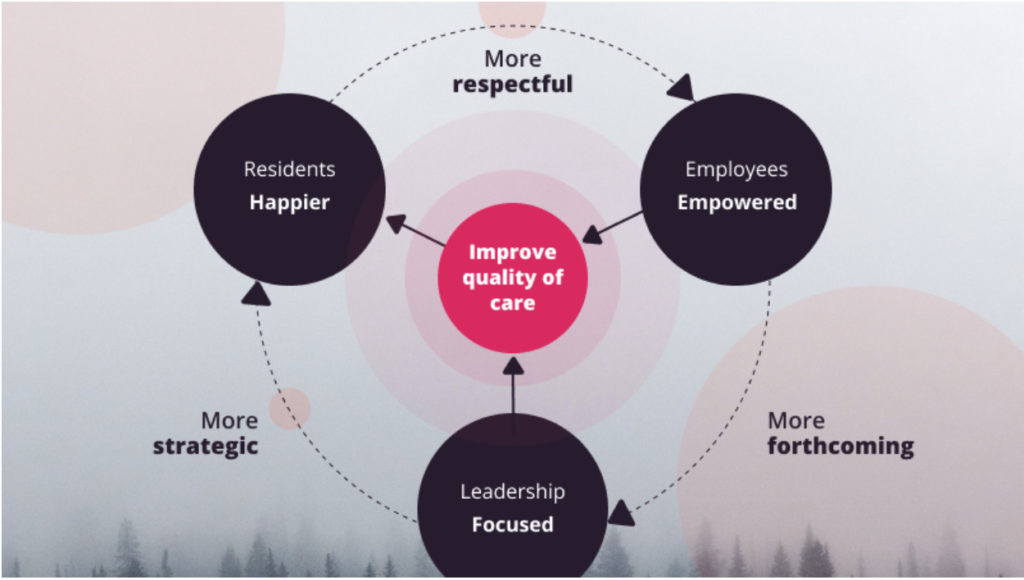Many introductory courses on leadership point out the distinction between management and leadership: managers manage, whereas leaders lead. The word “management” evokes a sense of top-down, authoritarian rule, whereas leadership carries a more positive connotation. Although both words describe the same general phenomenon, leadership conveys it in an aspirational way.
A related distinction exists between communication and engagement. Although both describe the act of sharing information, communication often is one-way, whereas engagement is necessarily two-way.
Like management, one-way communication is top-down, because information is presented without any channels designated for audience feedback. Engagement, on the other hand, encourages feedback by providing recipients with at least one channel designated for that purpose.
For the audience, one-way messaging always is a more passive experience. Think of your mindset when listening to a lecture versus in a one-on-one conversation. Unless it’s a riveting lecture, you’re likely more actively engaged in the conversation.
In senior living, our default mode when sharing information with residents is unidirectional communication. Sometimes, this approach makes sense — for example, when time is of the essence or we need to limit the number of people involved in a decision. Frequently, though, this approach is suboptimal for several reasons.
Engagement is better for the older adults we serve, our team members and us as leaders. It functions as a flywheel (shown below), where the positive effects build on one another over time to consistently improve quality of care:

To clarify what this visual is depicting, consider the following:
Engagement creates happier residents. Research confirms what intuition tells us: barking orders at senior adults does not facilitate successful aging, but engaging with individuals does. The cost of one-way communication can be accelerating cognitive decline. Social engagement, on the other hand, promotes brain health. Further, happy residents are more patient with and respectful toward staff members and caregivers. This respect lays the foundation for healthier relationships, improving quality of care.
Engagement empowers employees. Engagement means providing residents with channels for expressing opinions outside of venting to staff members. Because providing feedback in a one-way system is inconvenient, the feedback comes from the residents who believe most strongly about something. Feedback of this nature suffers from voluntary response bias and typically is delivered in an unpleasant manner. One-way communication forces our team members to spend time placating those who are upset rather than proactively addressing issues or incorporating feedback from less vocal residents. Engaging with residents empowers our team members because the resident-staff relationships are healthier. This improvement means losing fewer employees to burnout and improving daily care quality.
Engagement allows leadership to focus. Two-way engagement makes aggregating, analyzing and interpreting feedback possible. Today, many leaders rely heavily on annual feedback surveys conducted via pen and paper. This process is time-consuming, and the results often are biased. Choosing one-way communication means basing decisions on incomplete or even inaccurate data. Engagement platforms automatically collect data in real time, increasing sample size and reducing bias. With happier residents and empowered employees improving the quality of daily care, leadership remains focused on strategy. Feedback is collected automatically, so leadership accesses data insights on demand to inform key decisions. A focused leadership team armed with actionable insights makes better decisions, making residents even happier. At this point, the engagement loop is completed and the flywheel begins turning more quickly.
Ask these three questions to give your community’s Resident Engagement Flywheel a push:
2: What are the three best “feedback channels” available to us today?
3: How can we aggregate this feedback and make the data usable?
The final consideration to reflect on is the role that engagement technology will play in your community. Engagement technology has numerous benefits: reducing social isolation, increasing resident satisfaction, reducing healthcare costs, and more. With respect to the Resident Engagement Flywheel, engagement technology acts as both a catalyst and an accelerant. The implementation helps get the flywheel turning initially. Then the technology helps keep the flywheel spinning for years to come.
Managers communicate, and leaders engage; it’s time for senior living leaders to engage with the seniors we serve.
Kyle Robinson is the co-founder and vice president of business development at Wellzesta, a technology company providing solutions that nurture sales, reduce employee turnover and combat social isolation in eldercare. Before founding Wellzesta, she worked for 18 years in the senior living industry. She has master’s degrees in health communication and gerontology.




